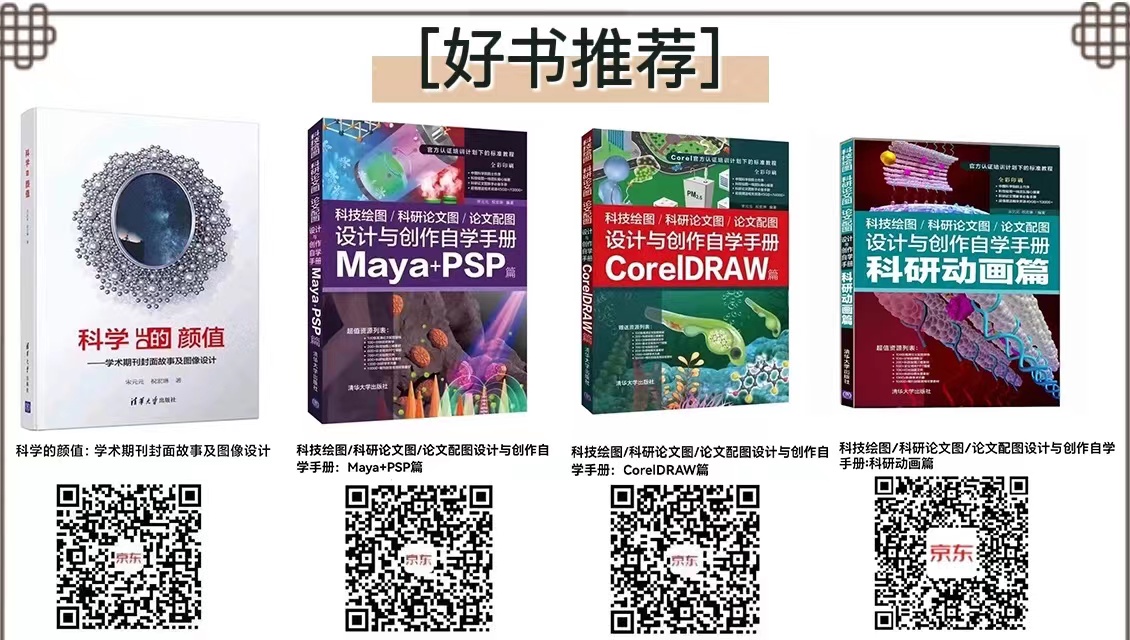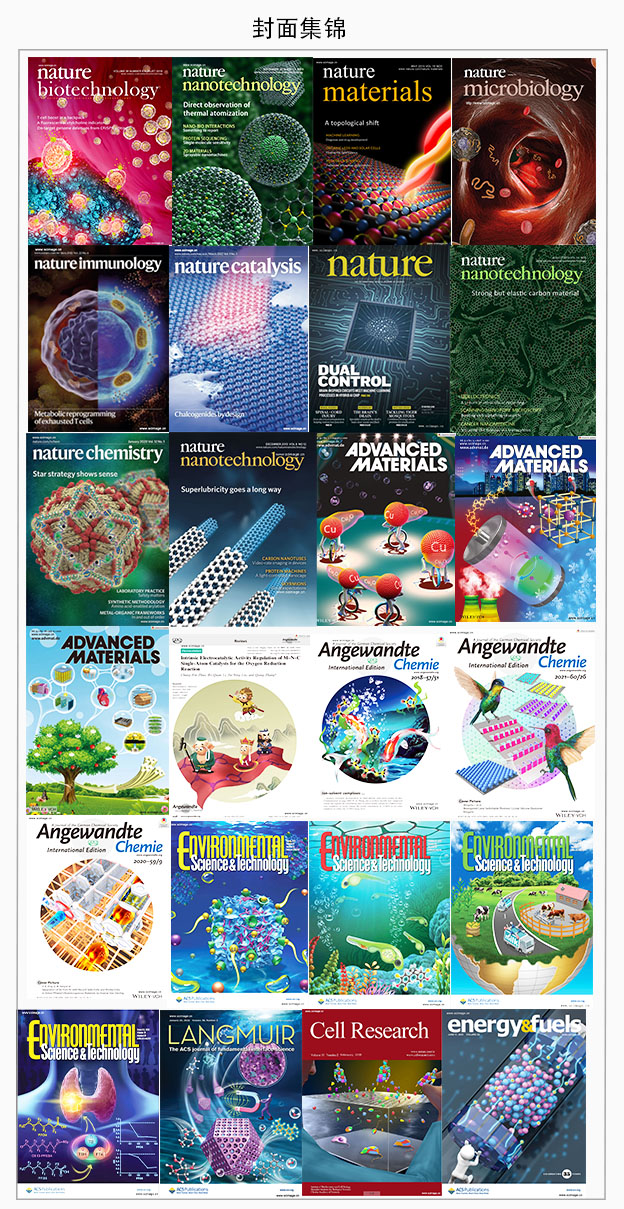博文
2022年11月嘲风作品集(一)
||

▲ Vol 66 Issue 22 | November , 2022
Diallyl Trisulfide Prevents Adipogenesis and Lipogenesis by Regulating the Transcriptional Activation Function of KLF15 on PPARγ to Ameliorate Obesity
Yanzhou Hu, Jia Xu, Ruxin Gao, Ye Xu, Bingxin Huangfu, Charles Asakiya, Xianghui Huang, Feng Zhang, Kunlun Huang, Xiaoyun He, Yunbo Luo
Mol. Nutr. Food Res. 2022, 66, 2200173
DOI: 10.1002/mnfr.202200173
Diallyl trisulfide (DATS), a bioactive compound in garlic, reduces lipid accumulation and ameliorates diet-induced obesity. DATS prevents adipogenesis and lipogenesis by inhibiting the binding of KLF15 to PPARγ gene promoter. This is reported by Yunbo Luo, Xiaoyun He, and co-workers in article number 2200173.
https://onlinelibrary.wiley.com/doi/10.1002/mnfr.202270059
▲ Vol 56 Issue 22 | November , 2022
Insights into Chlorobenzene Catalytic Oxidation over Noble Metal Loading {001}-TiO2: The Role of NaBH4 and Subnanometer Ru Undergoing Stable Ru0↔Ru4+ Circulation
Bohua Sun, Qianqian Li, Guijin Su, Bowen Meng, Mingge Wu, Qifan Zhang, Jing Meng, and Bin Shi
Catalytic combustion of ubiquitous chlorinated volatile organic compounds (CVOCs) encounters bottlenecks regarding catalyst deactivation by chlorine poisoning and generation of toxic polychlorinated byproducts. Herein, Ru, Pd, and Rh were loaded on {001}-TiO2 for thermal catalytic oxidation of chlorobenzene (CB), with Ru/{001}-TiO2 representing superior reactivity, CO2 selectivity, and stability in the 1000 min on-stream test. Interestingly, both acid sites and reactive active oxygen species (ROS) were remarkably promoted via adding NaBH4. But merely enhancing these active sites of the catalyst in CVOC treatment is insufficient. Continuous deep oxidation of CB with effective Cl desorption is also a core issue successfully tackled through the steady Ru0↔Ru4+ circulation. This circulation was facilitated by the observed higher subnanometer Ru dispersion on {001}-TiO2 than the other two noble metals that was supported by single atom stability DFT calculation. Nearly 88 degradation products in off-gas were detected, with Ru/{001}-TiO2 producing the lowest polychlorinated benzene byproducts. An effective and sustainable CB degradation mechanism boosted by the cooperation of NaBH4 enhanced active sites and Ru circulation was proposed accordingly. Insights gained from this study open a new avenue to the rational design of promising catalysts for the treatment of CVOCs.
https://pubs.acs.org/doi/abs/10.1021/acs.est.2c05981
▲ Vol 09 Issue 11 | November , 2022
Sustainable catalytic oxidation of 1,3-butadiene over dispersedly assembled Ce0.027W0.02Mn0.054TiOx featuring synergistic redox cycles
Qianqian Li, Chuanqi Li, Mengjing Wang, Guijin Su, Bohua Sun, Mingge Wu, Zhiwei Zhou, Jiaxin Pang, Jing Meng and Bin Shi
The challenge of the difficult recovery of ubiquitous low-boiling point alkenes in industrial exhaust gas gives catalytic oxidation a vital role, which crucially needs developing cost-effective catalysts. Herein, seven Ti-based catalysts with varied introduction of trace W, Ce and Mn were fabricated and assembled for the oxidation of 1,3-butadiene at 150–300 °C. Ce0.027W0.02Mn0.054TiOx featuring multiple cations exhibited exceptional oxidation activity. Based on comprehensive experiments and crystal cell theoretical analysis, the excellent catalytic activity was majorly governed by remarkably synergistic redox cycles among components: Mn3+ + Ti4+ ↔ Mn4+ + Ti3+, W6+ + Ti3+ ↔ W5+ + Ti4+, W6+ + Mn3+ ↔ W5+ + Mn4+, W5+ + Ce4+ ↔ W6+ + Ce3+, and Ce3+ + Mn4+ ↔ Ce4+ + Mn3+. The electron transfer between the catalyst interior and interface endowed Ce0.027W0.02Mn0.054TiOx rich active oxygen species with a sustainable 100% CO2 yield and certain anti-water interference. By combining the in situ dynamic oxidation process of 1,3-butadiene, a catalytic oxidation mechanism driven by synergistic redox cycles was proposed. The design of a multiple-cation catalyst featuring robust synergistic interactions could provide a new insight into the control of typical light alkenes.
https://pubs.rsc.org/en/content/articlelanding/2022/en/d2en00414c
▲ Vol 219 | November , 2022
Mechanisms of deformation and drug release of targeting polypeptides based on fibronectin induction
Weishen Zhong, Kai Yue, Anqi Wang, Genpei Zhang, Jiaqi Wang, Lei Wang, Hao Wang, Hua Zhang, Xinxin Zhang
Polypeptide nano-carriers with deformation and sustained-release function have gained an attention in anti-tumor treatment. A multifunctional polypeptide with different motifs was discussed and the contribution of each motif to targeted drug release was analyzed by control studies. The transformation and drug release processes of polypeptides were investigated by molecular dynamics method to reveal their dynamics mechanism, and corresponding experiments were performed to verify the simulation results. We observed that the polypeptides could form NPs under the hydrophobic interaction between self-assembly motifs and the electrostatic repulsion between targeting motifs. Affected by the ligand-receptor interaction, the targeting motifs overcame the electrostatic repulsion to approach the ligand proteins, leading to the promotion of the binding of fibrous motifs and the transformation of NPs into NFs for better retention of drugs in the tumor tissues. In addition, the polypeptides with strong hydrophobicity exhibited excellent sustained-release efficiency. These insights allow drawing general conclusions contributed to the design of transformable polypeptide NPs: The decrease in the hydrophobicity of self-assembly motifs is beneficial for the enrichment of doxorubicin in tumor tissues, as well as the similar result can be obtained with the improvement of the hydrophobicity of fibrous motifs and the capability of target.
https://www.sciencedirect.com/science/article/pii/S0927776522005197
▲ Vol 04 Issue 06 | November , 2022
One-dimensional PtFe hollow nanochains for the efficient oxygen reduction reaction
Peng Rao,Junming Luo,Jing Li,Wei Huang,Wei Sun,Qi Chen,Chunman Jia,Zhongxin Liu,Peilin Deng,Yijun Shen,Xinlong Tian
Integration of electronic and strain effects with tailored structures is significant to tuning the electrocatalytic activity and stability of the electrocatalysts for the oxygen reduction reaction (ORR). In this study, one-dimensional PtFe hollow nanochains are synthesized by a facile and effective method, which exhibit a highly open and porous structure. The modulated electronic and strain effects of Pt atoms are verified by extensive structural characterizations, and the mass and specific activities of the prepared catalyst are roughly 7.45 and 12.44 times higher than those of the commercial Pt/C catalyst, respectively. Remarkably, the catalyst demonstrates robust performance with negligible activity decay after an accelerated durability test for 30,000 cycles. The high activity of the catalyst is probably due to the optimized absorption affinity of Pt-O accelerating the reaction kinetics induced by the cooperation of Fe atoms as well as the unique hollow and curved structures. This study provides new insights into the rational design of high-performance ORR catalysts with considerable durability.
https://onlinelibrary.wiley.com/doi/10.1002/cey2.192
<静远嘲风动漫传媒科技中心>设计制作

购书链接:
☆科学的颜值:学术期刊封面故事及图像设计
https://item.jd.com/12802188.html
☆科技绘图/科研论文图/论文配图设计与创作自学手册:CorelDRAW篇
https://item.jd.com/13504674.html
☆科技绘图/科研论文图/论文配图设计与创作自学手册:Maya+PSP篇
https://item.jd.com/13504686.html
☆科技绘图/科研论文图/论文配图设计与创作自学手册:科研动画篇
https://item.jd.com/13048467.html#crumb-wrap


静远嘲风(MY Scimage) 成立于2007年,嘲风取自中国传统文化中龙生九子,子子不同的传说,嘲风为守护屋脊之瑞兽,喜登高望远;静远取自成语“宁静致远”,登高莫忘初心,远观而不可务远。



https://blog.sciencenet.cn/blog-519111-1374715.html
上一篇:一样的元宵节,不一样的是有选择。预祝元宵快乐
下一篇:2022年11月嘲风作品集(二)